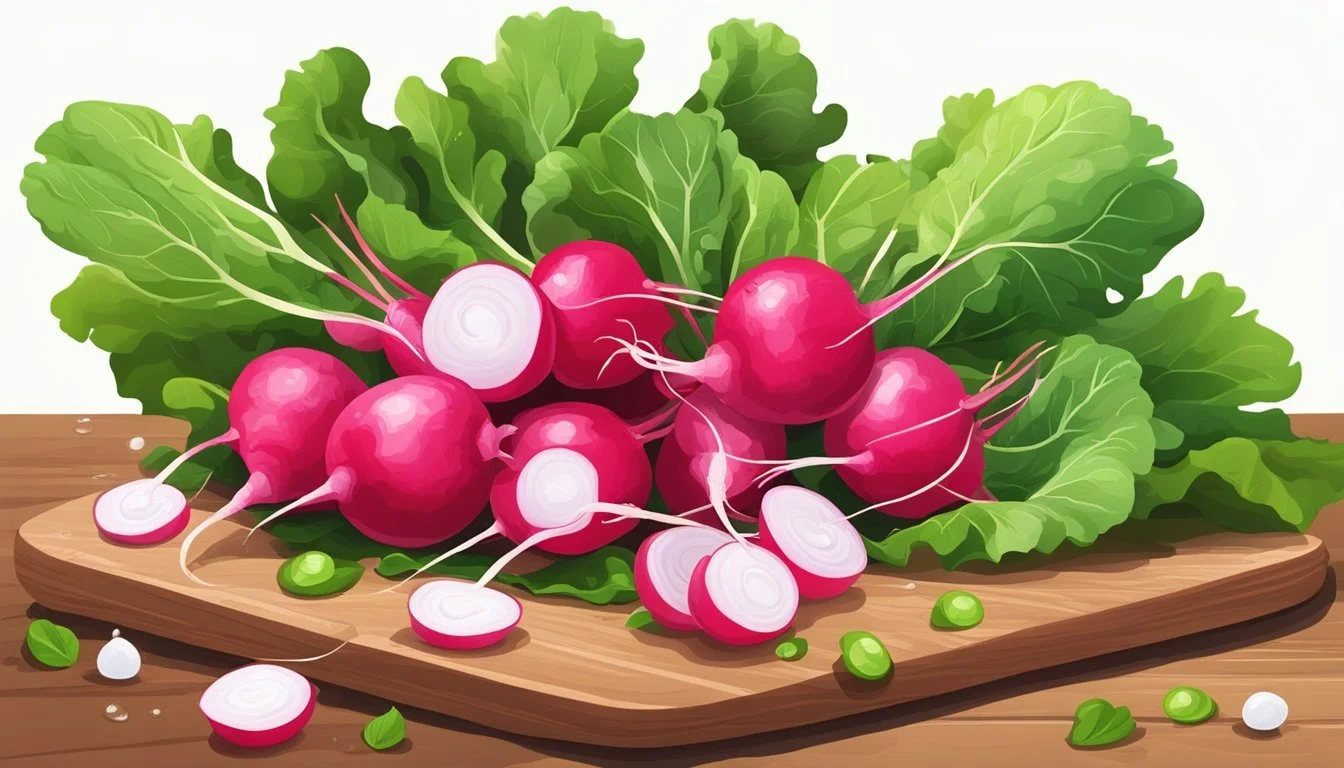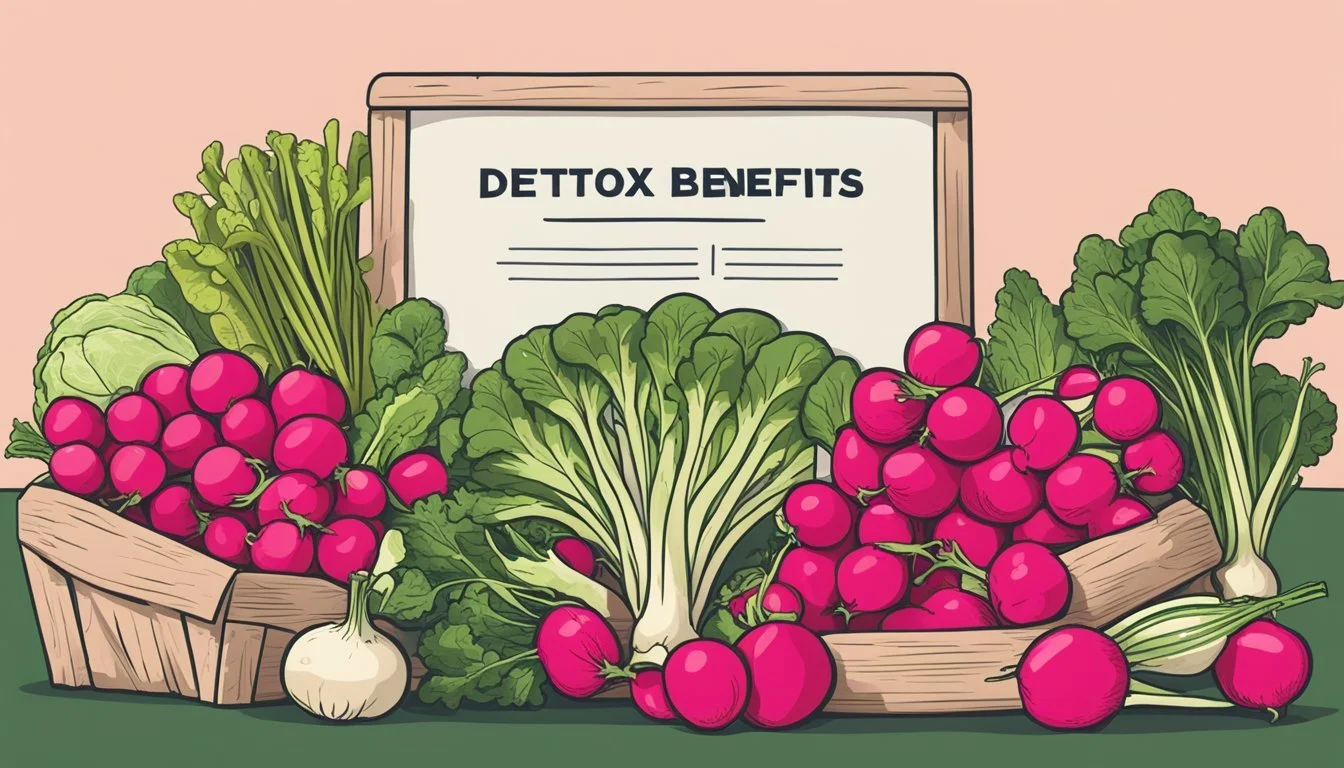How Many Servings of Radishes are Optimal for Detoxification Benefits?
Radishes are often considered a beneficial addition to a diet focused on detoxification due to their nutritional profile. They are a hydrating food, rich in fiber, vitamins, and minerals, which can support the body’s natural detoxification processes. The fiber content aids in maintaining a healthy digestive system, potentially helping to cleanse the body of waste and toxins. Furthermore, radishes contain compounds like RsPHGPx, which serve as antioxidants and may play a role in the liver’s phase 2 detoxification pathway. This specific pathway is crucial for neutralizing a variety of harmful chemicals, suggesting that radishes could be a supportive food for liver health.
Determining the optimal number of servings of radishes for detoxification purposes varies, as individual dietary needs and health objectives differ. However, moderation is key, as with any dietary component. According to some recommendations, a portion size around 70 grams is suggested. High in potassium, radishes can assist in lowering blood pressure and thus support the cardiovascular system, which is also important during detoxification. Considering their nutrient density and potential health benefits, incorporating radishes into one's diet could contribute to an overall detox strategy.
Understanding Radishes
Radishes, a root vegetable from the Raphanus sativus species, offer a range of types and rich nutritional benefits. They are widely acknowledged for their vitamins, minerals, and antioxidants content.
Types of Radishes
Daikon: A long, white variety known for its mild flavor and often used in Asian cuisine.
Red: These are small, round, and have a peppery taste. They are the most common variety.
Black: Also called Spanish radishes, they have a strong flavor and are larger in size.
Purple: A less common variety with a vibrant color and a slightly sweet flavor.
White: Similar to daikon, but often smaller and with a sharper taste.
Each type of radish can contribute to a diverse diet and can be used in various culinary preparations.
Nutritional Profile
Nutrient Value per 1 cup (116g) raw sliced radish Calories 19 kcal Fat 0.1g Sodium 45mg Carbohydrates 4g Fiber 2g Sugar 2.2g Protein 0.8g
Radishes are rich in vitamin C, covering 29% of the recommended daily intake in one cup. They also provide essential minerals such as potassium, folate, manganese, and vitamin B6. The high water content and fiber aid in hydration and digestive health, while antioxidants contribute to detoxification.
Health Benefits of Radishes
Radishes are esteemed for their nutrient content and health-promoting properties. They are particularly noted for aiding digestive health, supporting cardiovascular function, possessing anticancer properties, and facilitating liver function and detoxification.
Digestive Health
Radishes are a rich source of fiber, which can aid in maintaining a healthy digestive system. They help promote regular bowel movements and can prevent constipation. The high water content in radishes also contributes to hydration, which is essential for digestive health.
Cardiovascular Health
The potassium found in radishes plays a significant role in cardiovascular health. It helps regulate blood pressure, which can reduce the risk of heart disease. Radishes are also low in calories and their fiber content helps manage cholesterol levels, contributing to overall heart health.
Anticancer Properties
Isothiocyanates and glucosinolates, compounds found in radishes, are of interest for their potential anticancer properties. These naturally occurring substances may help in detoxifying and eliminating potential carcinogens from the body. The antioxidants, such as vitamin C, further support this protective effect by combating free radicals.
Liver Function and Detoxification
Radishes support liver health due to their detoxification abilities. They can help eliminate toxins and waste from the body. Additionally, the presence of compounds like isothiocyanate enhances the liver's function of flushing out toxins, which is essential for body detoxification processes.
Detoxification and Radish Servings
Radishes possess compounds that may support detoxification processes in the liver, such as isothiocyanates. They're rich in vitamin C and other nutrients that can contribute to overall health and may play a role in maintaining liver function.
Recommended Servings for Detox
When considering radishes for their potential detoxification benefits, it is important for individuals to consume them in moderation as part of a balanced diet. There is no one-size-fits-all recommendation, but incorporating a small number of radishes into the diet can contribute to the intake of beneficial nutrients. A half-cup serving of radish slices is commonly referenced as a suitable amount, with the following nutritional content:
Nutrient Amount in Half-Cup Serving Calories 9.3 kcal Total Carbohydrates 2 g Fiber 0.9 g Sugar 1.1 g
Including both the roots and radish leaves, which are part of the cruciferous vegetable family, can further enhance the diet, providing additional fiber and nutrients.
Incorporating Radishes into Meals
Radishes can be included in meals in a variety of ways. They are commonly added to salads for a peppery crunch and can also be a refreshing component in a detox salad mix, combining radish slices with greens and a light dressing. Chopping radish leaves into a salad increases the dish's nutrient density. Additionally, considering their hydrating qualities and the crunch they provide, radishes are excellent when eaten raw. Here are a few recipe suggestions to include radishes:
Diced radishes in a tuna or chicken salad
Sliced radishes added to sandwiches for extra texture and flavor
Grated radishes mixed into coleslaw
Radish leaves sautéed with garlic as a side dish
Regular consumption of radishes as part of meals can be especially beneficial in maintaining stable blood sugar levels and aiding in hydration.
Preparation and Recipe Ideas
The versatility of radishes makes them a fitting ingredient for an array of dishes, whether served raw or cooked. Balancing their spicy crunch in salads or mellowing their bite through roasting, radishes can be prepared in ways that complement detoxification diets.
Raw Radish Dishes
Salads:
Simple Radish Salad: Thin slices of radishes mixed with a lemon vinaigrette. Optionally, add olive oil for richness and finely chopped garlic for an added kick. Garnish with herbs like parsley or mint.
Radish Pickle: Combine sliced radishes with vinegar, sugar, and salt for a tangy side dish or sandwich topping after a few hours of marination.
Cooked Radish Delights
Roasted Radishes:
Classic Roasted Radishes: Radishes become tender and mild when roasted. Toss them with olive oil, salt, and pepper, and roast at 400°F until crisp on the outside and soft on the inside.
Braised Radishes:
Garlic Braised Radishes: Braising provides a mellow flavor. Sauté radishes with butter, add a splash of broth, and simmer until radishes are tender. Finish with a punch of garlic for extra flavor.
Each recipe can form part of a balanced detox approach when consumed in moderation.
Radish Consumption and Health Considerations
When consuming radishes for their detoxification benefits, it is important to understand the optimal intake to harness their nutritious value, while being aware of potential allergies and interactions with other foods and conditions.
Optimal Intake and Overconsumption
Optimal Intake: Radishes are a nutrient-dense food that contain important vitamins and minerals which contribute to the body's detoxification processes. A single serving of radishes provides a good amount of vitamin C, key in the fight against free radicals, and can support blood pressure regulation due to its potassium content. They are also low in calories, with one cup of sliced radishes containing about 19 calories and nearly 2 grams of fiber. This level of intake can help manage constipation without contributing heavily to daily calorie load.
Carbohydrates: Radishes have a low carbohydrate content, making them a suitable option for individuals managing diabetes.
Protein: They offer minimal protein, which is still beneficial for overall health.
Fiber: The fiber in radishes plays a role in promoting gastric motility, thereby aiding in the prevention of gastric ulcers and supporting overall digestive health.
Overconsumption: While adding radishes to the diet is generally beneficial, excessive consumption of any food, including radishes, can lead to digestive upset. Overeating radishes could potentially cause gastrointestinal discomfort due to their high fiber content, especially in individuals not accustomed to a high-fiber diet.
Allergies and Interactions
Allergies: Radishes can trigger allergic reactions in some individuals. Symptoms of a food allergy to radishes could include itching, swelling, and gastrointestinal distress. If a person suspects an allergy to radishes, it is crucial that they consult with a healthcare provider.
Interactions: Radishes possess natural compounds that may influence health, such as nitrates which are known to aid blood flow. However, individuals with specific health conditions or those on certain medications should be cautious. For example, the natural nitrates in radishes may interact with blood pressure medications. Therefore, consultation with a healthcare provider is advised, particularly for individuals on medication for blood pressure or related conditions.
Consumption of radishes should be balanced and moderated, especially in special populations such as those with allergies or on medication regimens.
Comparative Benefits with Other Vegetables
When considering detoxification, the nutritional content and unique compounds of radishes offer distinct benefits compared to other vegetables.
Radishes vs. Other Cruciferous Vegetables
Radishes are part of the cruciferous vegetable family, which includes broccoli, cauliflower, and cabbage. These vegetables are known for their rich nutrient profiles and contribution to detoxification.
Vitamins and minerals: While all cruciferous vegetables provide essential vitamins and minerals, radishes are specifically noted for their vitamin C content. For example, a half-cup serving of radishes can offer about 14 percent of the recommended daily allowance of vitamin C.
Antioxidants: Radishes contain antioxidants that help to fight free radicals in the body. Comparatively, broccoli is also high in antioxidants, including vitamin C and various carotenoids.
Fiber content: Radishes contain nearly 2 grams of fiber per cup (sliced, raw), which is lower than broccoli and cauliflower that have about 2.4 grams per cup.
All cruciferous vegetables play a role in detoxification due to their content of glucosinolates, but each has a unique nutritional profile affecting their efficacy.
Unique Compounds in Radishes
The distinctiveness of radishes in a detoxification diet also comes from specific compounds they possess.
Isothiocyanates: Radishes contain these compounds, resulting from the breakdown of glucosinolates, which have been shown to aid in detoxification.
Anthocyanins: Some radish varieties are rich in anthocyanins, the pigments that give them their vibrant red or purple color. These compounds have antioxidant properties which help in the detoxification process.
Peppery taste: The characteristic peppery taste of radishes is attributed to the presence of isothiocyanates. This not only sets them apart flavor-wise from milder tasting cruciferous vegetables like cauliflower but also indicates their detoxifying capabilities.
Radishes are a unique cruciferous vegetable with a nutritional makeup that includes essential antioxidants for detoxification, such as vitamin C and isothiocyanates, which may offer comparative benefits for those seeking to include detoxifying foods in their diet.





